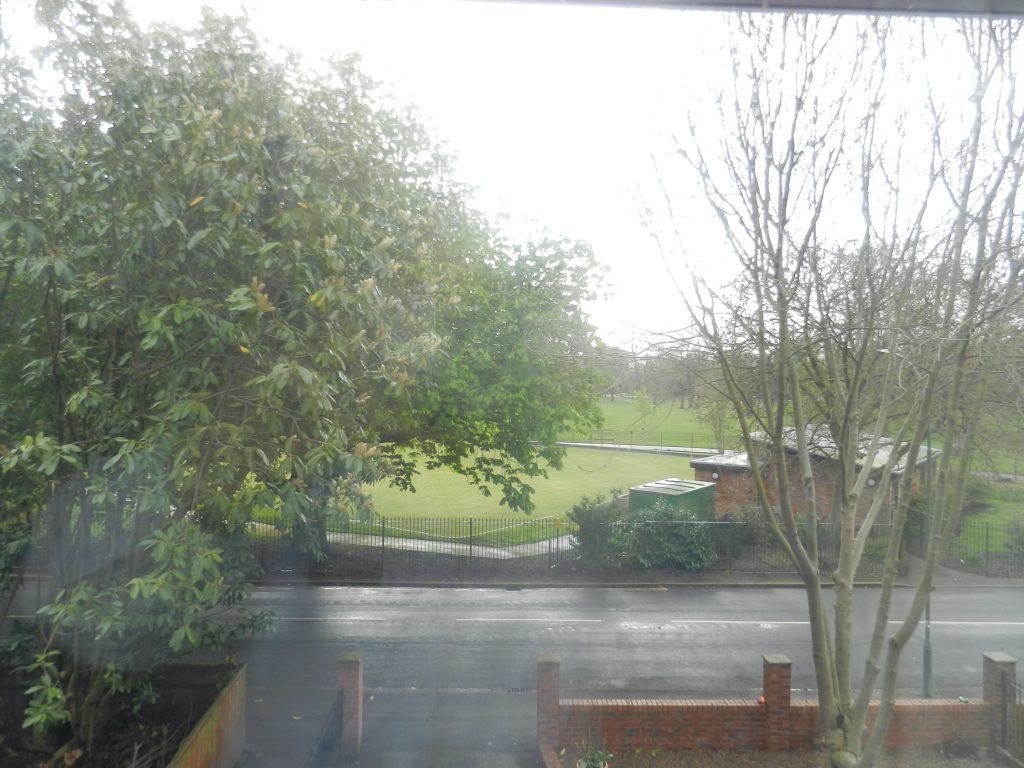
The view west from my living room window shows an image of another slow spring, like last year, although for opposite reasons. In 2022 there had been virtually no rain from the first of April, and this was to continue. This year April, and March, have been very wet, and with little settled sunny weather the ground remains cold with lots of gardeners waiting before planting even though Easter has gone, and it was quite late. On the allotment I have planted most of the second-early seed tubers but the ground is almost saturated and they will be slow to get going even if they don’t rot in the ground.
Of the trees in the foreground of the photo above the laurel, bottom left, is evergreen, but does lose some leaves all through the year and because these are leathery they decompose very slowly, even when in a compost heap. This makes them a particular problem in drains or on damp pathways. Laurel is not a British native tree/shrub, plants being originally imported from Mediterranean areas of Europe. However, it is hardy and became a popular option for planting schemes and as hedging in and around parklands, especially municipal parks in the late 19th century. As with the one in the picture they can grow quickly, spread out from the initial trunk and overtake surrounding plants. Although chosen to give an area some winter colour when deciduous trees stand bare they have to be clipped or lowered regularly so they don’t get out of hand.
Between the road and the bowling green stands a horse-chestnut tree, now in full leaf after the leaf-buds (‘sticky buds’) have opened. Surprisingly for a species of tree that is certainly the most common in Hull’s municipal parks, the horse-chestnut is not a native tree having been brought to this country firstly in the reign of Elizabeth I from the Balkan region. Usually one of the first trees to grace the spring with its leaf canopy they now start to form their flowers, these taking the form of tall spikes of 40+ five-petalled white flowers.
(to be continued).